Vertigo at Victoria Falls, a sunset surrounded by lions and swimming in the Nile: A journey from Cape Town to Cairo
Why do we travel and who inspires us to do so? Chris Wallace went in search of answers on his own epic journey the length of Africa.
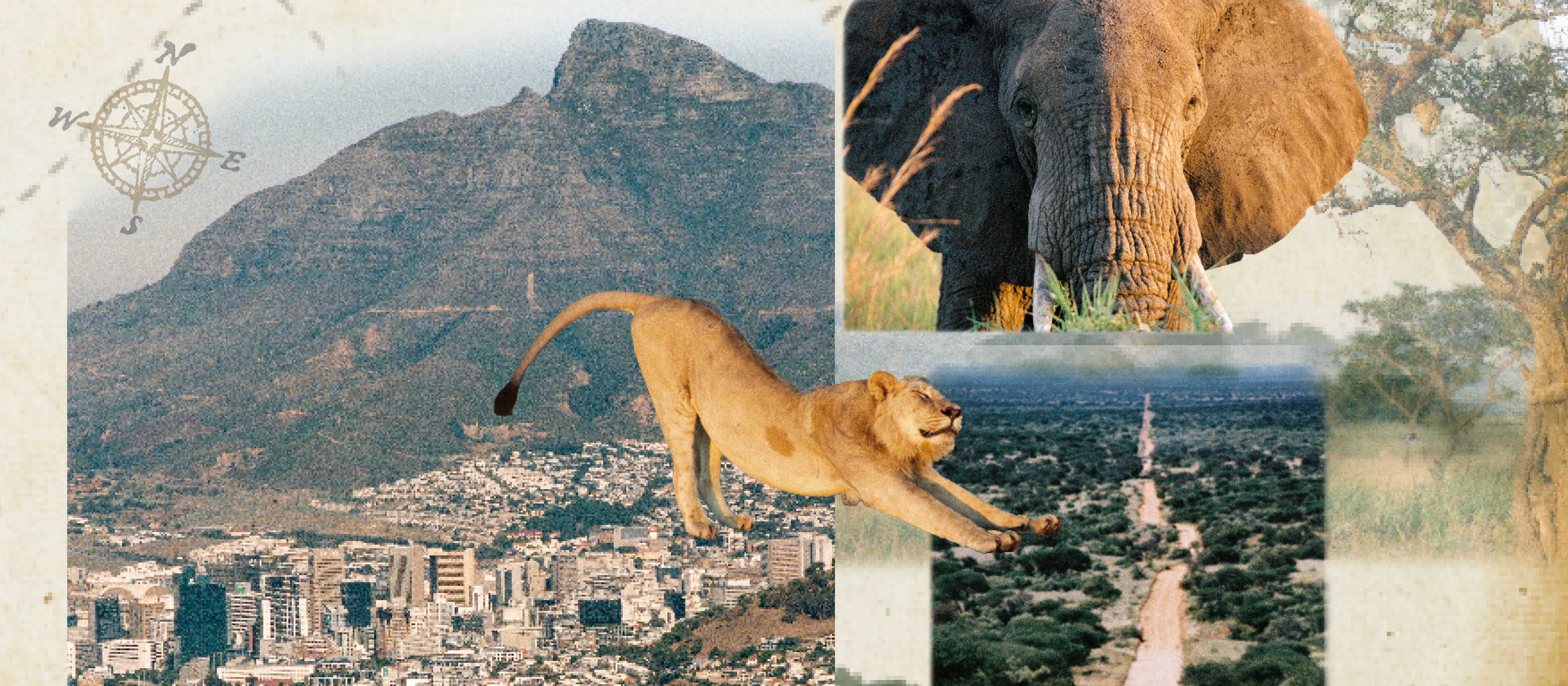
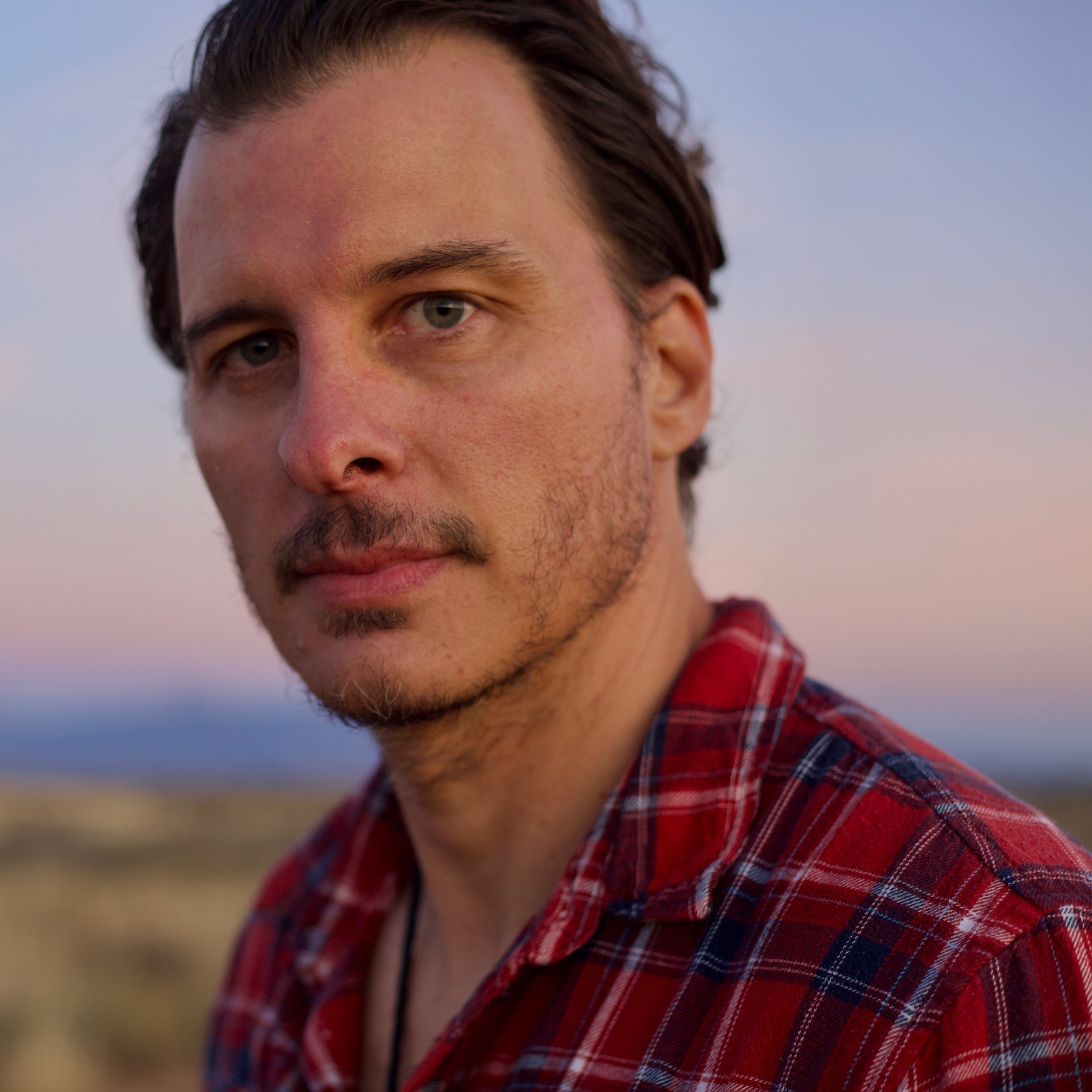
In 1898, a 24-year-old man named Ewart Grogan attempted to travel from Cape Town to Cairo on foot as a romantic overture. Some 6,500-odd miles, over the course of 2½ years — in the hopes that it might convince the aristocratic father of his beloved that he was worthy of her hand in marriage.
For decades previously, the journalist-turned-colonialist Henry Morton Stanley (1841–1904) and his colleagues in the Royal Geographical Society fantasised about a rail line that would connect the tip of Africa to its tail, the better to plunder the continent of its wealth. It was an idea readily championed by Cecil Rhodes (1852–1902), who hoped to buy up enough contiguous territory from the north to the south of the continent to create a ‘red line’ for the English Crown more efficiently to exploit its resources. In the latter half of the 20th century, slightly more reasonable minds, including the travel writer Paul Theroux, who wrote a memoir full to popping of his adventures on route, made the trip overland, by way of motor vehicle — and still managed to court disaster, find acclaim and go a bit batty in the process.
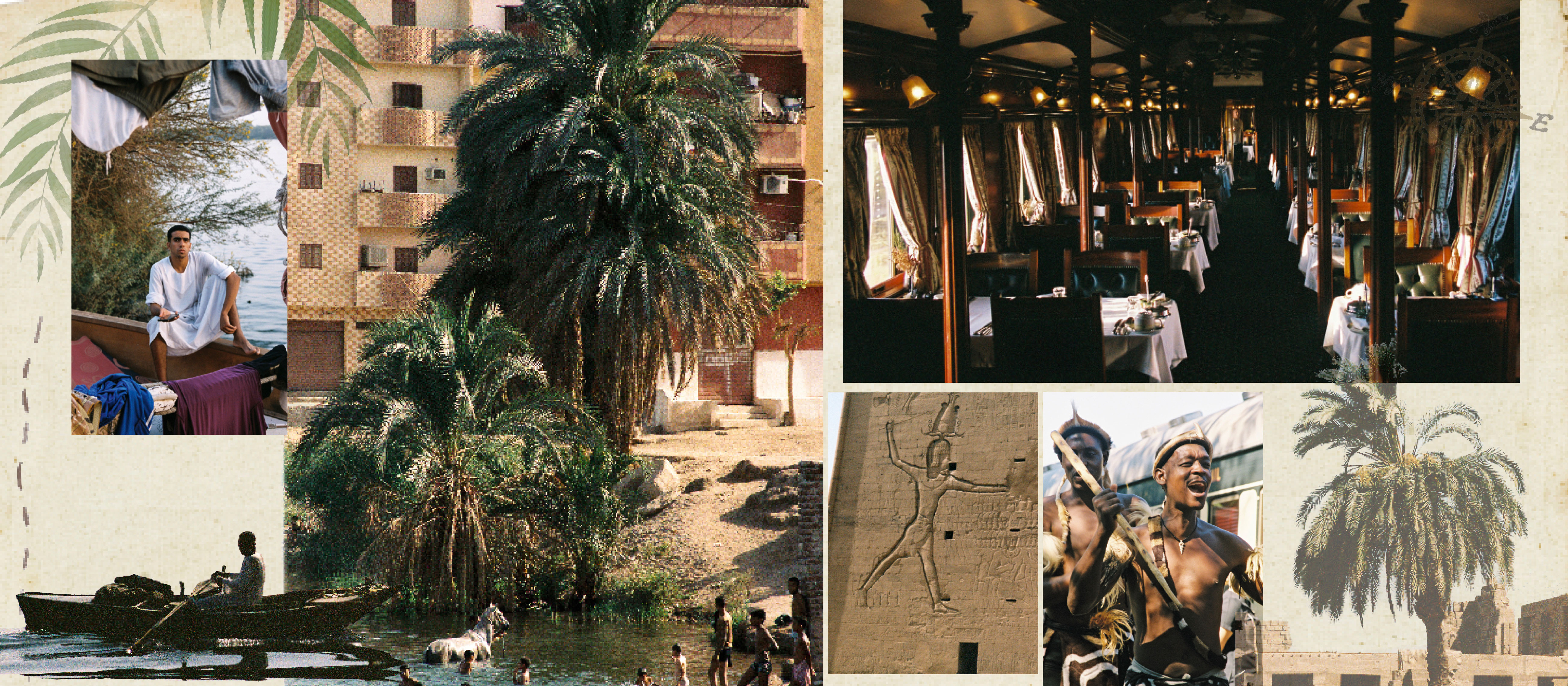
Clockwise from top left: stepping aboard a dahabiyya on the Nile in Egypt; the view of Egyptian life as seen from on board; the luxury of Rovos Rail's dining car en route to Victoria Falls, Zimbabwe; Luxor Temple; the train being greeted at Victoria Falls; the Temple of Edfu in Egypt; and a fisherman in the purple dusk light.
It is the kind of journey that draws maniacs, completists, fantasists of all stripes. A Holy Grail of accomplishment; an absolutely foolhardy endeavour; and the trip of a lifetime. I couldn’t resist the challenge, so, in the first week of April 2024, set about ruining myself financially and otherwise on my own three-month trip from Cape Town to Cairo, in search of… I’m not entirely sure. Adventure, probably. Escapism, definitely. Perhaps, too, for a better way to understand myself in the world.
I am awed by the grandeur of a mission, by the idea of a journey as some sort of opus, by the romance of safari. I grew up reading the European travellers who moved about the world in what is often described as the ‘Golden Age of Travel’ — the Wilfred Thesigers, the Freya Starks, the Patrick Leigh Fermors, even the Agatha Christies — and thought them to be the most glamorous people who had ever lived because of their apparent worldliness. They seemed to live with a purpose and a historical significance few others did. What stories they must have gathered.
"I dressed up in linen suits and safari jackets and was overwhelmed with experiences: playing with meerkats in the Kalahari, visiting a watering hole with some 250 elephants in the Okavango Delta of northern Botswana, riding a dhow around an archipelago off the coast of Mozambique"
I was, therefore, predisposed to be fascinated by the late artist and Africa fanatic Peter Beard, about whom I recently wrote a book. For my research, I went back to the stories of those travellers and explorers I grew up admiring (as Peter had) and began to think that so much of the way we travel now has been informed by the way they saw and moved through the world. To see travel as acquisitive, extractive, for one. Going on the road for a souvenir, be it a material object or a story, even for the enrichment of oneself.
At the time of my trip, two separate women were completing solo cross-continental trips, one on motorcycle, the other on a plain old bicycle, and sharing their adventures on YouTube and TikTok. I cheered them on from the various luxury camps and helicopters and five-star hotels I had somehow snookered my way into, biltong and a gin and tonic in hand. I certainly didn’t do anything that could be thought of as an achievement, but I dressed up in linen suits and safari jackets and was overwhelmed with experiences: playing with meerkats in the Kalahari, visiting a watering hole with some 250 elephants in the Okavango Delta of northern Botswana, riding a dhow around an archipelago off the coast of Mozambique, testing my vertigo at the lip of Victoria Falls, watching the sunset surrounded by a pride of 25 lions in Tanzania and, of course, swimming in the Nile.
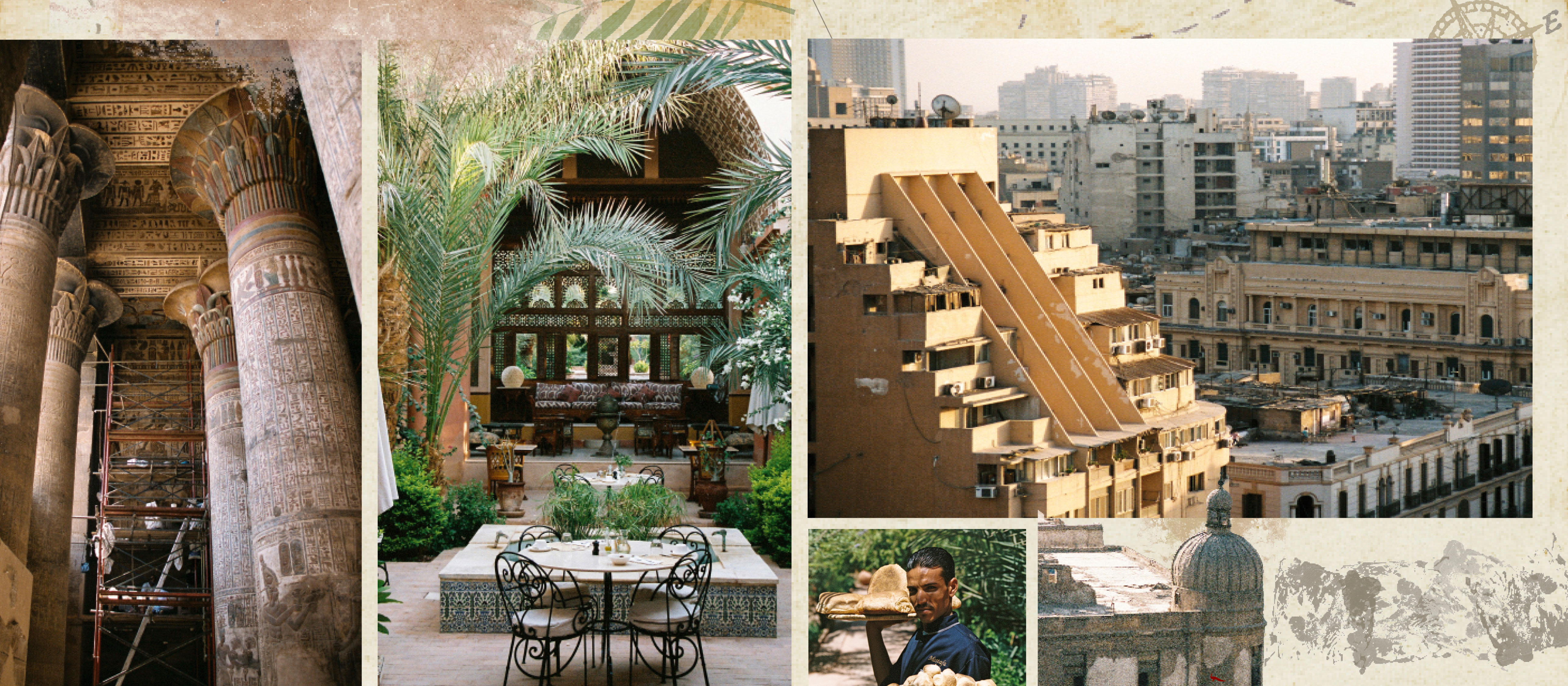
Clockwise from left: Restoration work at the Temple of Khnum at Esna, Egypt; the garden restaurant at Hotel Al Moudira in Luxor; downtown Cairo as seen from the Immobilia Cairo building; and a waiter at Hotel Am Moudira.
If, at various times during the three months of planning and the 12 weeks spent travelling, the whole expedition began to teeter, crumble and threaten to fall apart, it never really did. Somehow. The week I was meant to be in northern Madagascar, I was rained out, but deftly rerouted to north-east Zambia. The Zambia Airways plane that I left on — which didn’t have enough electricity to land, according to ground staff — finally accepted a charge and arrived safely.
Sign up for the Country Life Newsletter
Exquisite houses, the beauty of Nature, and how to get the most from your life, straight to your inbox.
The following week, a safari in central Zimbabwe around which I’d built much of the journey fell apart, but another one, in eastern South Africa, took its place. All an enormous relief, because I wasn’t travelling with the slightest amount of wiggle room, in my bank account or in the itinerary. My form of financial planning involves aliens arriving before the rent is due and I travel the way Jude Law’s character swam in Gattaca — saving nothing for the return home, so I was incredibly lucky.
Christopher Wallace’s pick of best places to stay, from Cape Town to Cairo
Cape Town, South Africa
The Winelands, South Africa
Botswana
Natural Selection: Jack’s Camp, North Island Okavango; Tawana, Tuludi
Namibia
Zannier Hotels: Omaanda and Sonop
Zambia
Zimbabwe
Mozambique
Tanzania
Kenya
Egypt
Nour el Nil cruise
Sofitel Legend Old Cataract, Aswan
Al Moudira, Luxor
Not that there was any grand purpose to the trip. I wasn’t filling in any blank spots on the map and did nothing under the banner of science, yet it was new and revelatory to me. On a wonderfully rickety train through Zimbabwe, for example, I began thinking about how difficult it is to escape the main-character mindset with our sense of self, our experiences, our time in history, even.
If the story we are telling ourselves about ourselves and our experiences can, through travel, grow in dimension and dynamism — personal enrichment — it tends also to become more diffuse. In other words, for every bit of shelfie kitsch or dinner-party banter we collect on the road, we may leave a part of ourselves, a part of our concern.
Returning to the Tsavo National Park in Kenya, the first place I ever visited on the continent and where I had returned during the research for my book on Beard, I was thrilled to find a few layers of experience and reflection happening at once. Being back in this place that has become such a major part of my own story felt like encountering a once-close friend again. With some time and distance since our last meeting, I could see and feel intimately every way in which things had changed, as well as how I had changed — even as I was making the memories that would be incorporated in the changes to come.
As a trophy from the journey, it may not win the hand of a princess or bring fame or glory, but it was a good enough reason for me to go and keep going back again. That and lions.
F&P Travel can organise a Cape Town to Cairo adventure for two people, from £24,536. The price includes stays at Mount Nelson, Jack’s Camp, Time + Tide Chinzombo, Singita Grumeti and Finch Hattons on an all-inclusive basis, and Al Moudira on a bed-and-breakfast basis, internal flights and transfers.
Christopher Wallace is the author of 'Twentieth-Century Man: The Wild Life of Peter Beard', whose scrapbooks inspired the collages in this feature. You can read about Wallace's own meetings with Beard, here.
Christopher Wallace is a writer and photographer. His biography of the late photographer Peter Beard, ‘Twentieth-Century Man: The Wild Life of Peter Beard’, was published by Ecco press. Before going freelance, Wallace was the US Editor of Mr Porter and the Executive Editor of Interview Magazine. His writing has appeared in the New York Times, The Paris Review, and on Substack, among others. Chris was born and raised in Los Angeles and once upon a time made a few short films that won some awards at festivals. Longer ago than that, even, he played college football, before eventually quitting the team to write poetry. He still makes similarly poor career decisions — his words, not ours.
-
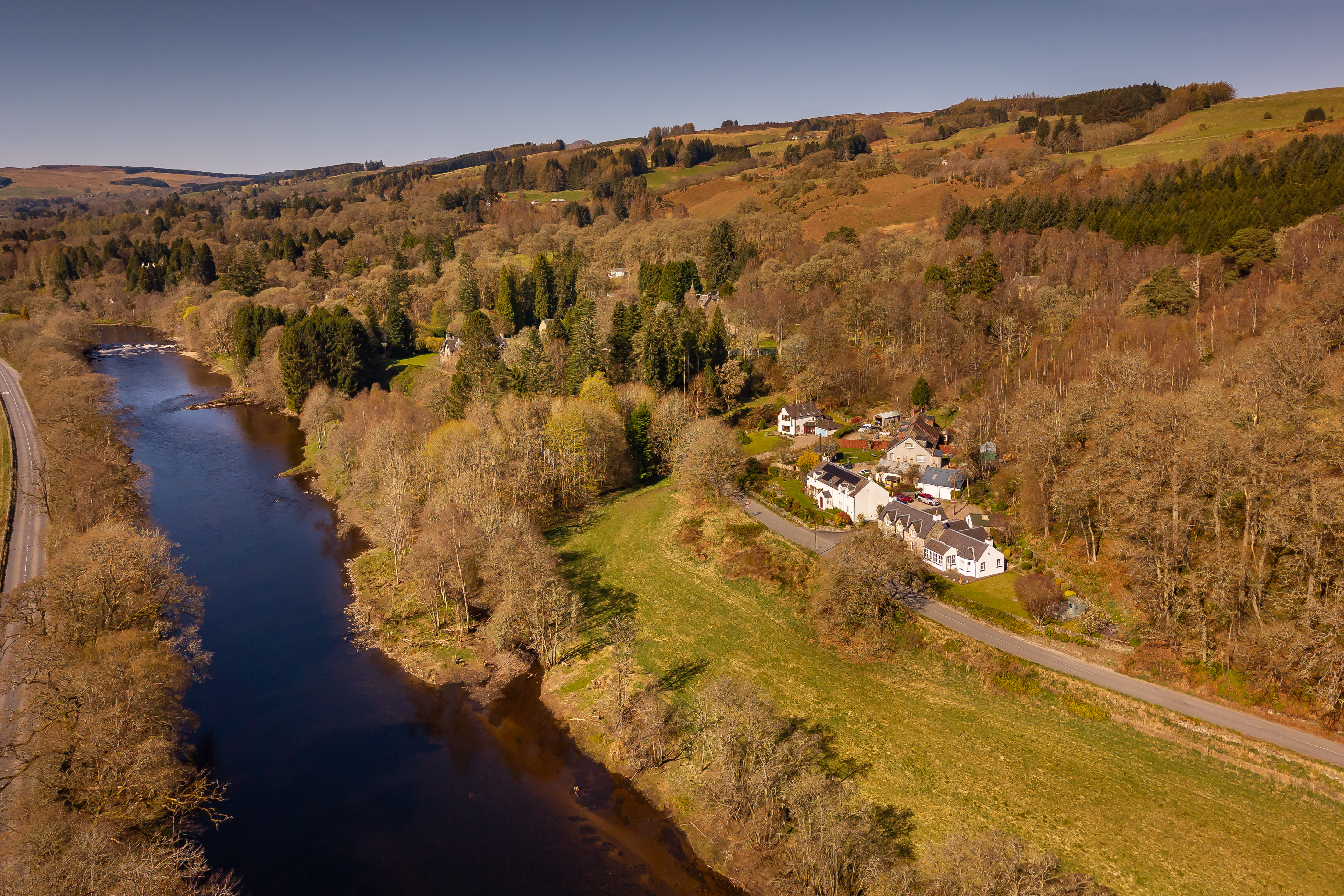 A gorgeous Scottish cottage with contemporary interiors on the bonny banks of the River Tay
A gorgeous Scottish cottage with contemporary interiors on the bonny banks of the River TayCarnliath on the edge of Strathtay is a delightful family home set in sensational scenery.
By James Fisher
-
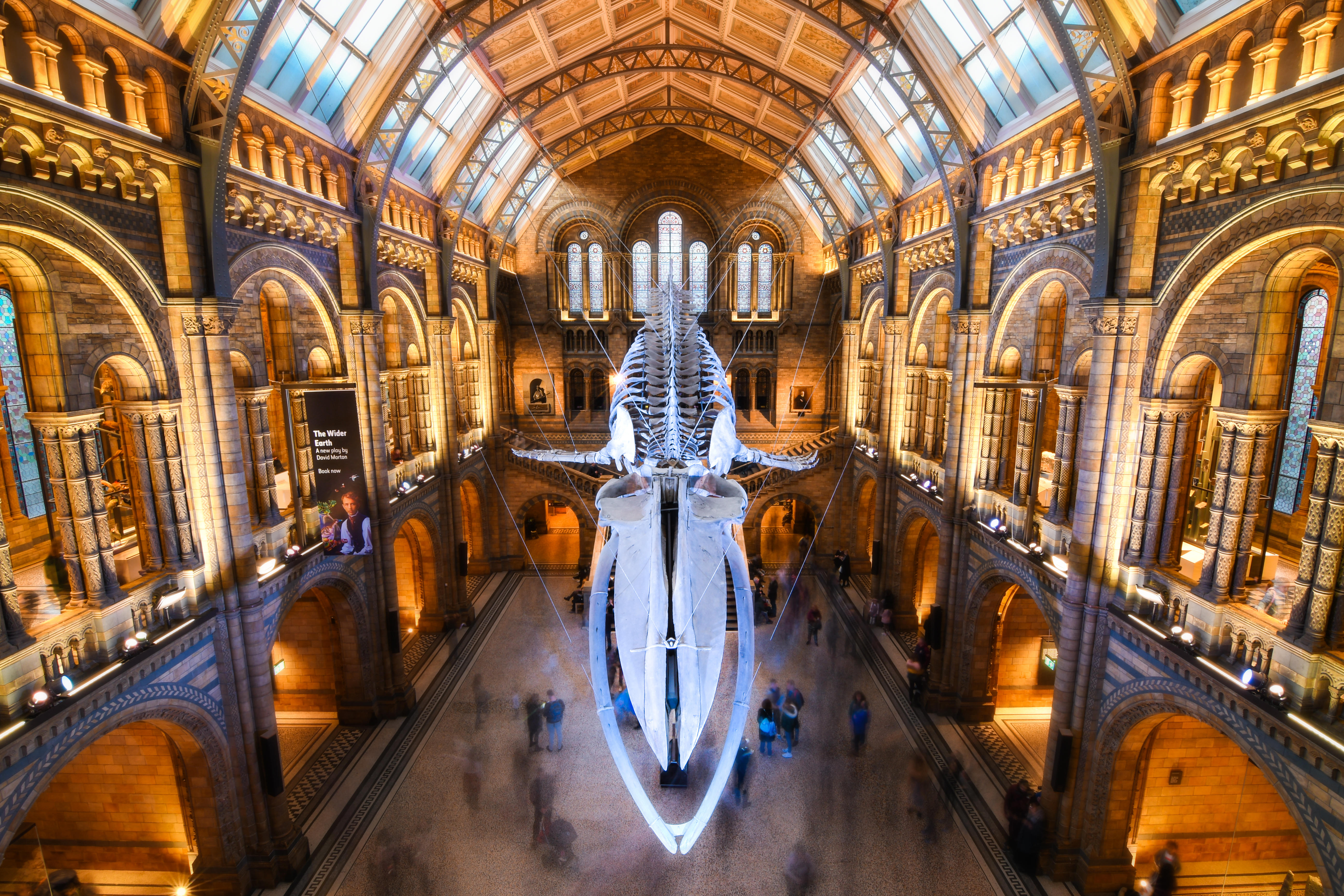 Athena: We need to get serious about saving our museums
Athena: We need to get serious about saving our museumsThe government announced that museums ‘can now apply for £20 million of funding to invest in their future’ last week. But will this be enough?
By Country Life